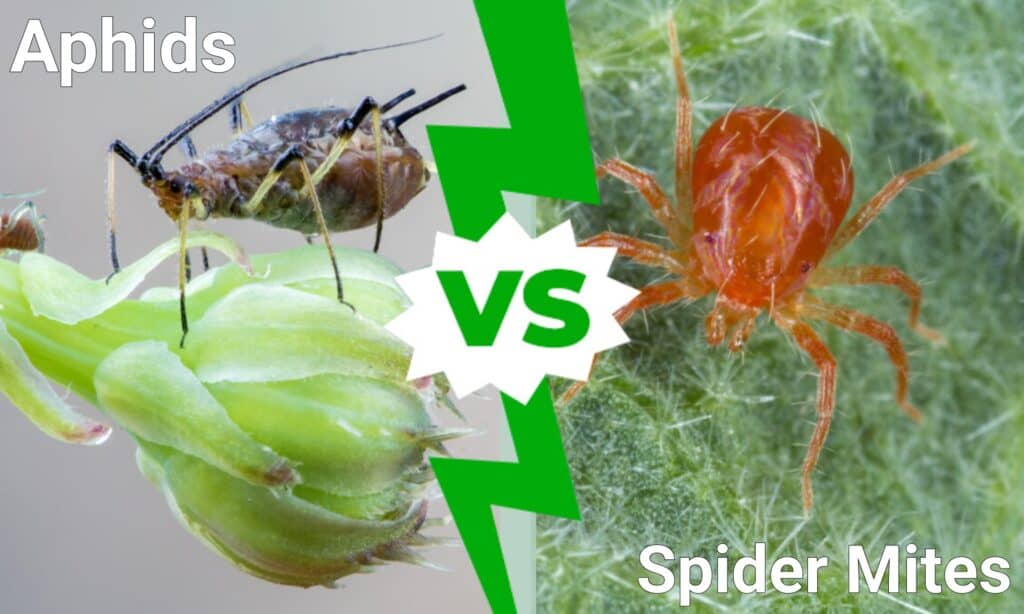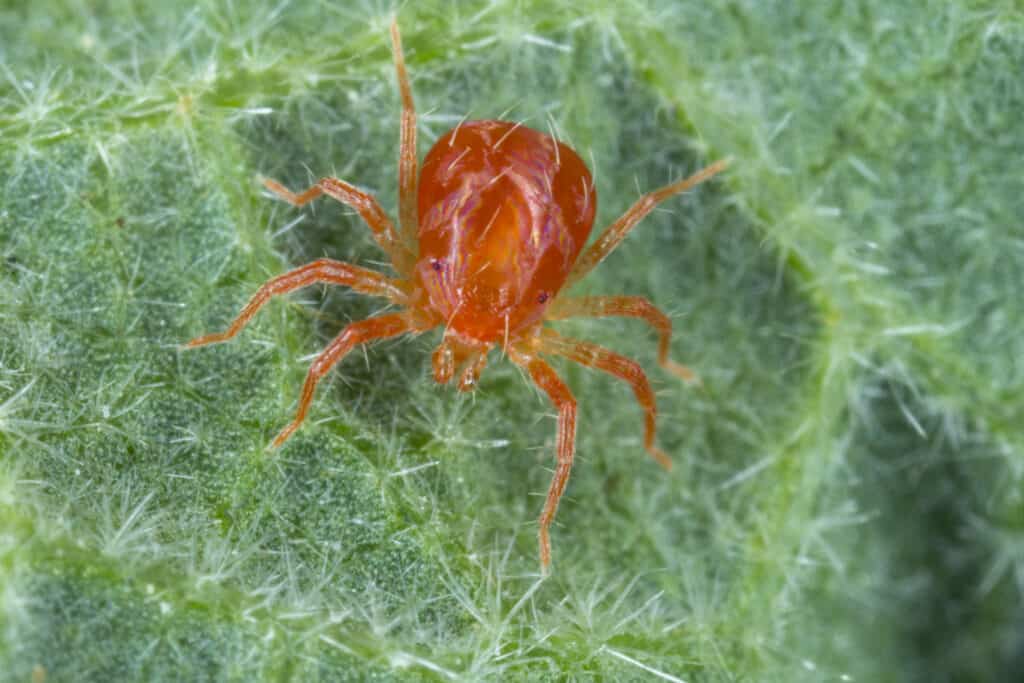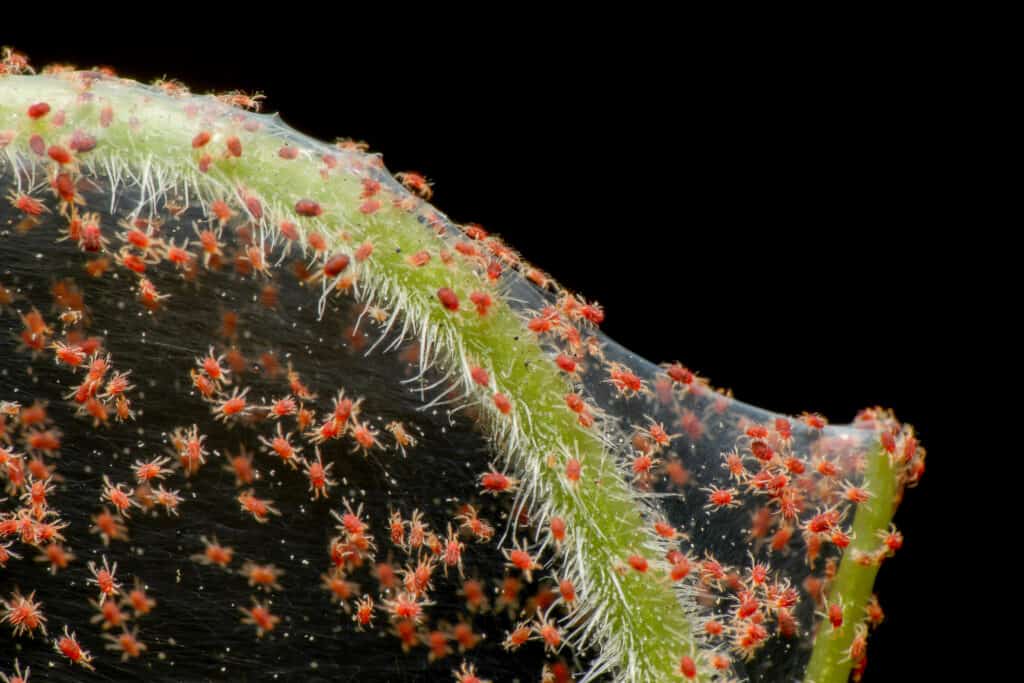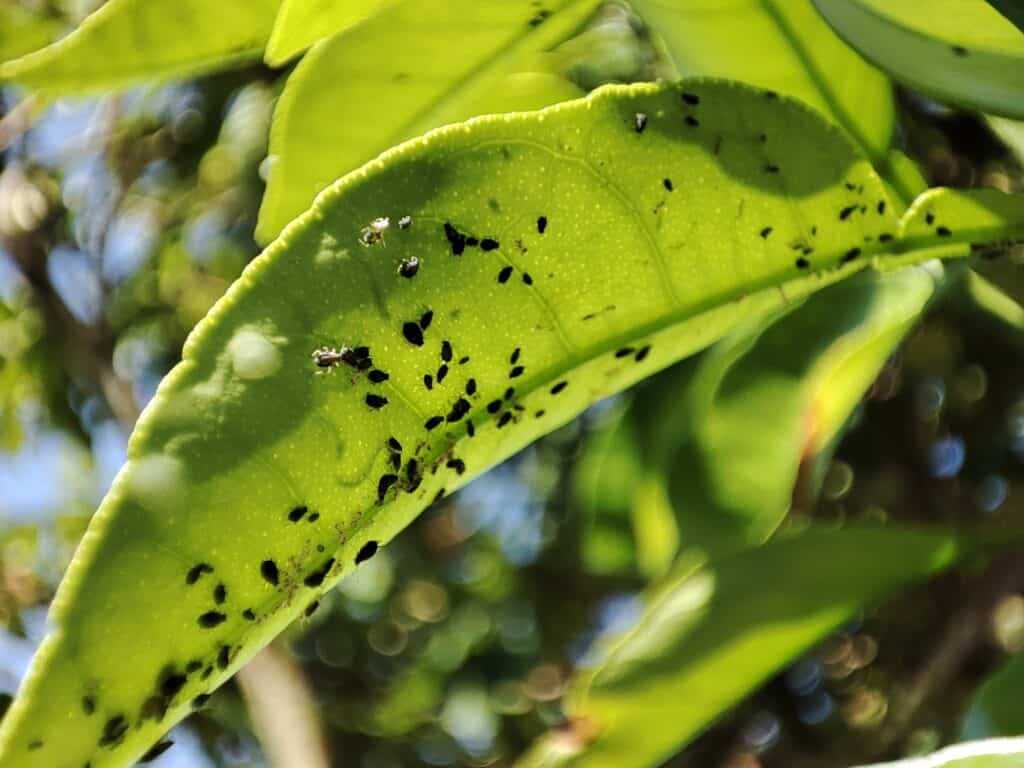It can be tricky to determine the differences between aphids and spider mites because they look so similar. These pests generally invade plants and can wreak havoc on beautiful plants that you take pride in.
Aphids and spider mites not only look unsightly on plants, but they can be difficult to tell apart. This makes it difficult to determine what type of pest you are trying to fight off your plants.
Understanding the differences between aphids and spider mites allows you to find the right solution to successfully eradicate them. If you were to eliminate both pests from your plants using the same method, it might not work the best for the individual pest.

Are Aphids And Spider Mites The Same Thing?
Both aphids and spider mites are two different pests that invade greenhouses, gardens, and even household pot plants. This means that aphids and spider mites are not the same things.
Aphids are small arachnids that feed off the sap found in plant leaves, whereas spider mites eat the plant leaves. They both have different appearances and can cause visible damage to plants.
Both aphids and spider mites cluster together in large groups and can be seen on the leaves of a plant. However, their small size makes it understandably difficult for many people to tell the difference between these two pests.
One of the most noticeable differences between aphids and spider mites is that aphids are larger than spider mites. Spider mites will leave webbing on the plants, while aphids will leave a substance known as honeydew on plants. Honeydew attracts ants and further increases the chances of a pest infestation on your plants.
Identifying Aphids and Spider Mites – How To Tell Them Apart
To successfully identify whether it is truly an aphid or spider mite that is attacking your plants, you first need to know the main characteristics of each pest for successful identification.
| Aphids | Spider Mites |
|---|---|
| Small size at 1/16 to 1/8 of an inch and can be seen better by the naked eye | Tiny at only 1/15 of an inch and difficult to see with the naked eye |
| Colors range from green, white, black, brown, yellow, pink, red, or grey | Colors range from white, green, brown, red, and orange |
| 6 legs | 8 legs |
| Insect | Arachnid |
| Has 2 antennae | No antennae |
| Pear-shaped body with a narrow head | Wide mid-section with an oval-shaped body |
| Found under leaves, flower buds, soft stems, and new shoots | Found under leaves |
| Has two cornicles (tail extensions) at the end of their bodies | No tail |
| Produce a sweet and sticky substance known as honeydew on leaves | Leaves fine, white webbing on leaves and plant stems |
| Can fly | Does not have wings |
| Most active during spring in warm temperatures | Prefer hot and dry conditions and are most active in the summer months |
| Sucks the sap out of soft plants that cause plants to have stunted growth, yellow and wilted leaves that fall off | Eats through the underside of plants causing white spots the form. The leaves eventually turn yellow and die off |
| Can be killed with an insecticide | Can be killed with a miticide |

Spider mites have a distinctly red / orange color that distinguishes them from aphids
©Tomasz Klejdsz/Shutterstock.com
What Are The Main Differences Between Aphids and Spider Mites?
Both aphids and spider mites have a similar coloration which is why they are often mistaken for one another. The spider mite is an arachnid and resembles a small spider, whereas the aphid is an insect that has 6 legs and a much larger body that can easily be seen in comparison to spider mites.
If your plant has been infested with spider mites, you will notice thin, white, and wispy webbing on the plants, usually from the leaves to the stem. In some cases, spider mites will create this web to travel from different plants that are together in the same area.

The Webbing Is A Clear Sign of A Spider Mite Infestation On This Plant
©BirdShutterB/Shutterstock.com
Aphids will leave a sticky residue on the plant called honeydew that will attract ants. If you have aphids attacking your plants, you are guaranteed to have ants drawn to the infected plants because they feed from this substance.
When it comes to the damage these pests do to plants, you will find that aphids suck on the sap from tender leaves, while spider mites eat holes in the plant. Both of their methods of feeding off plants cause the leaves to turn yellow and eventually fall off from damage.
Do Aphids and Spider Mites Attack Plants?
Aphids and spider mites are some of the most common pests that attack plants. They will form groups under the leaves and start to slowly destroy the leaves, stems, and any flower buds of plants. They will typically attack plants during the months when they are most active and the temperature is ideal. Therefore, you can expect them to attack during the spring and summer months.
It is more common to find spider mites on plants that do not get misted or watered much because they prefer dry conditions. Severe aphid or spider infestations can quickly spread from plant to plant, as the spider mite produces webs to get from each plant, whereas the adult aphids can fly to the next plant. This makes it important to eliminate these pests before they have the chance of spreading to the next plant.

Aphids don’t just attack the topside of leaves – be sure to check the underside as well.
©jamaludinyusuppp/Shutterstock.com
How To Eliminate Aphids and Spider Mites
If you suspect that your plants have been invaded by spider mites or aphids, these are the steps you should take to get rid of them:
Get Rid Of Aphids
- Spray cold water on the leaves that are infected continuously throughout the day. You can use a spray bottle and keep the water in the fridge between each spray.
- You can use horticultural oils, neem oil, and insecticidal soaps on the leaves of each plant. You can get this from your local plant nurseries to try and prevent the aphids from inhabiting the plant.
- You can also try the at-home method of one teaspoon of dish soap in a spray bottle with water and spray onto plants that you will not be eating.
- With severe infestations, you can rid your plants of an aphid infestation by using a pesticide.
Get Rid Of Spider Mites
- Introduce natural predators to the plants like ladybugs and other parasitic mites to ward off the spider mites.
- Isolate the infected plants from others as spider mites can travel by a web between different plants.
- Apply insecticidal soaps containing potassium as the main ingredient and a miticide.
- Neem oil can be applied to the affected leaves to ward off the spider mites.
- Spray the leaves of the plant with water to wash off the aphids and honeydew.
Conclusion
It is easy to get confused between aphids and spider mites because they look so similar, and both cause the same destruction to plants. However, you will find that the main difference between the two pests is that aphids are larger, produce a sticky substance that attracts ants, and do not produce any webbing. Whereas the spider mite is much smaller, leaves visible white webbing between the plants, and eats holes in the plant’s leaves.
Up Next…
Read more about spider mites, aphids, and pests below:
Do Ladybugs Eat Aphids? – Everything you need to know
How To Get Rid of Aphids Permanently – A step by step guide
The Green Aphid – A guide to this leaf colored pest
The photo featured at the top of this post is © Rainer Fuhrmann/Shutterstock.com
Thank you for reading! Have some feedback for us? Contact the AZ Animals editorial team.






